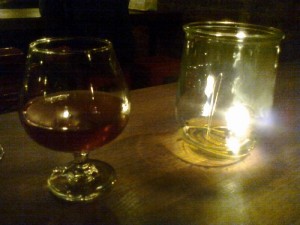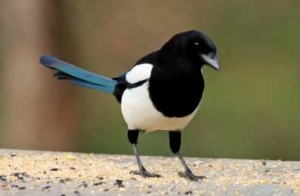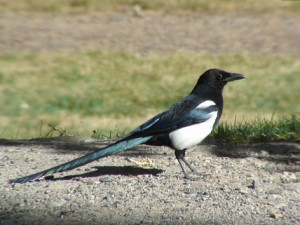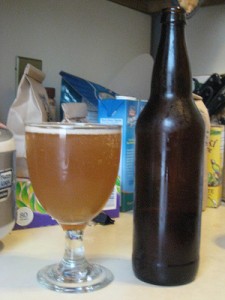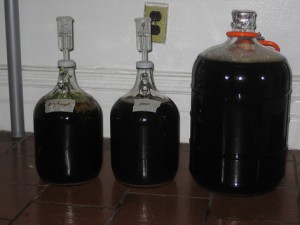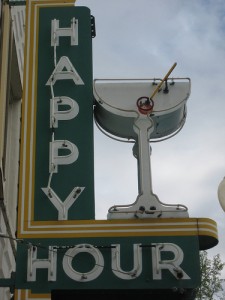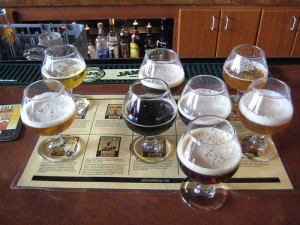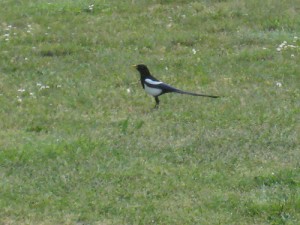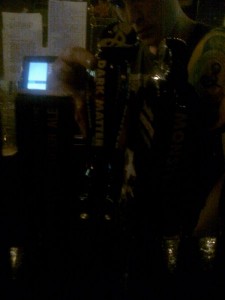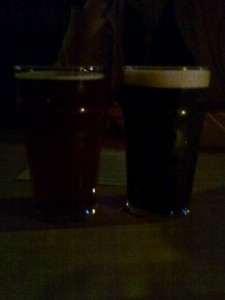Goodness gracious, I’ve fallen behind on this. Pretty sure the last update ended with the Green Magpie, which was meant to be a dry, hoppy, and refreshing saison that turned out dry and hoppy, though I’m not particularly thrilled about the hop character. I used all Cluster hops largely because they were what our local homebrew shop had on hand in whole leaf form and most descriptions mentioned a citrus character to the hop. I suppose that’s there, though I also get a weird ammonia flavor from it as well. If you’ve ever had Anchor Steam, you have a good idea of what Cluster hops taste like. Not sure exactly what went awry with the Green Magpie, but next year I’ll be looking into swapping hop varieties for something either more bright and citrusy like Citra or spicy like one of the noble hops. In preparation, I just ordered a pile of Amarillo and Citra whole leaf hops.
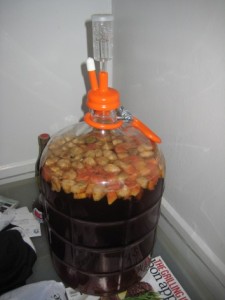
The figs got a bit gnarly looking after floating on beer for two weeks, but the end result is quite tasty!
The last of the summer saisons was the Blue Magpie Saison, named for the Taiwanese Blue Magpie. Figs and papayas are favorites of the bird, so we figured we’d incorporate them in the recipe. The base beer was a fairly straightforward saison with pilsner malt, a bit of wheat, and a good bit of Caramunich as well. I added a pound of fig puree made from a mix of fresh and dried black mission and turkey figs with ten minutes left in the boil. When racking the beer to secondary, I added another pound of dried figs and a pound of fresh papaya and let it sit for two weeks. Turned out quite nice in the end, with a decidedly sweet character that never cloys. Next year I want to try pitching a pack of brettanomyces when racking the beer onto the fruit in the hopes of developing a tart funky counterpoint to the fruit.
I kicked off the fall brewing with an all-grain ordinary bitter called Bitter American, which is pretty much the same recipe as an earlier beer called Bitter, Mike?, except for the use of all American ingredients: 2-row barley, a little crystal malt, Delta hops, and American Ale yeast. It’s super drinkable with a nice toasted malt character.
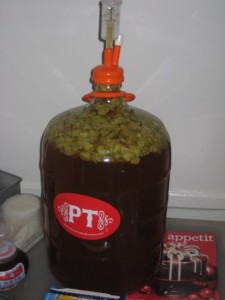
One of the fun bits was seeing the beer creep up into the airlock and take on a slightly green tinge from the hops.
In preparation for the next beer, I leaped into the world of on-line homebrew supply shopping and bought a pound of whole leaf Centennial hops, which are the sole hop used in some of my favorite American IPAs like Bell’s Two Hearted Ale, Founders Centennial IPA, and Ballast Point’s Big Eye IPA. Continuing our tradition of naming IPAs for their brew date, this became the Constitution Day IPA. The recipe was pretty straightforward, with two-row, some crystal 60 and 40, a bit of dextrose, and lots of Centennials, with the bulk of the hops added at the end for a big aroma blast. The dextrose addition was inspired by double IPA recipes, but I think it ended up drying out this relatively lower gravity (1.049) beer a bit too much. When racking this beer into the carboy, I failed to properly account for the volume the dry hops took up and ended up with about a pint of beer overflowing onto the floor. I suppose I can’t be doing too badly if that’s the first beer puddle I’ve made on the kitchen floor in a little over a year of homebrewing.
On the same weekend I bottled the IPA, I also bottled the one-gallon batch of a soured black saison that had been tucked away in the closet for three months. Two weeks after bottling, I tried a bottle. The aroma is fantastic, full of sour cherries, red wine and tobacco, and rather reminiscent of the Russian River Supplication which supplied the souring bugs. The flavor was pretty good as well, though with a weird medicinal off-flavor appearing near the end. I’ve read that sours can go through phases of flavor in the bottle, especially during the first month or two. I’ve hidden the rest of the bottles from myself to give them some time to (hopefully) develop a bit further.
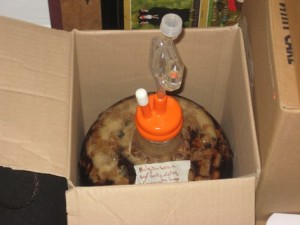
Current name for this beer is Consternation.
The brewing plan for October called for two strong dark Belgian ales. The first was originally dubbed the “basic Belgian brown,” but it turned out nearly black so it’s now the Blackie Brown. Two gallons of that were conditioned normally and bottled. The remaining three gallons went into a carboy with dates, oak cubes, and the dregs of a couple bottles of Russian River Consecration to sit for six months and hopefully get a bit strange in a good way.
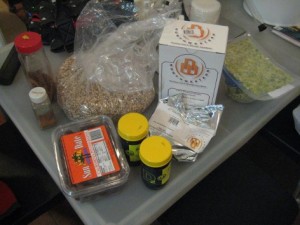
It's always fun to look at all the ingredients laid out on the table and think, "Soon this will all be beer!"
The second strong dark ale is this year’s edition of St. Aedan’s Ale, which is the Christmas beer I named (more or less) for my nephew. A strong dark ale made with cinnamon, nutmeg and allspice plus dates replacing the raisins from last year.
On the last weekend of October, I made my third ever all-grain five gallon batch, which is a dark mild destined for Thanksgiving dinner at my parents’ house. By a fun coincidence, this was batch #26 overall and it was fermenting over the NYC marathon weekend*, so it is now dubbed the Marathon Mild.
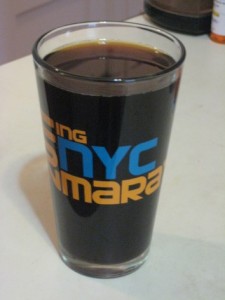
This is the Marathon Mild. Obvious choice of glassware is obvious.
Last weekend, I continued the all-grain trend with a re-creation of an 1868 Scottish ale (original recipe
here) that has been dubbed the Fat Ethel Old Scottie Stout. In a case of classic shopping fail, I went to the local homebrew shop with a short shopping list (Maris Otter, black patent malt, and Fuggles plugs) only to find they were out of two of the three items. The black patent malt was replaced by a mix of roast barley and Carafa Special II, and the Fuggles hop plugs were replaced by Fuggles pellets and Willamette whole leaf hops. It turned out well in the end, with a black wort that tastes a bit of French roast coffee and dark chocolate.
And that’s where things stand right now. Next two items on the schedule are a second attempt at a Burton ale inspired by the Pretty Things KK and a smaller batch of an all-grain barleywine, some of which will be conditioned with Lagavulin-soaked oak cubes.
*I ran the NYC Marathon this year, which was my first marathon. Finished in 3:57:22.

